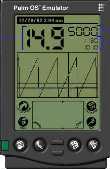Wideband Sensor Positioning
The wideband sensor must be carefully placed in order to prevent
damage to the sensor itself and to maximise accuracy. Also, if you
use the sensor's output directly (via the simulated narrowband output)
to drive your ECU then you should be doubly careful. Please follow all of
these "rules" :
- The sensor should always be placed on the engine side of a catalytic
converter, unless you are testing the effectiveness of the convertor itself.
- The gas temperature to the sensor should never exceed 850 degrees
C (about 1560 degrees Fahrenheit).
- The sensor should never be run without power to the WB unit (a
hot sensor burns off carbon residues)
- Always have the long axis of the sensor perpendicular to the gas
flow (stops sensor clogging)
- Position the sensor vertically or at most between 10 o'clock to
the 2 o'clock position (this avoids cracking the internal ceramic
structure should moisture condense internally)
- We don't recommend using a short sections of exhaust pipe
shoved up your tailpipe. A specially welded additional bung is
the best mounting strategy.
The sensor reads the partial pressure of gases in the exhaust and infers
the AFR, rather than by measuring some magical AFR directly. This may be an
issue on forced induction, and in particular, on turbo-charged
engines.
- AFRs will indicate richer than they are, causing you to run leaner than
you think.
- Lean AFR's will be richer (or less lean) than indicted.
A solution is to ensure you locate your sensor away from the turbo, and
certainly on the exhaust (low pressure) side of the turbo rather than the
engine side.
